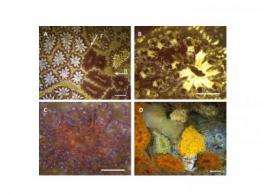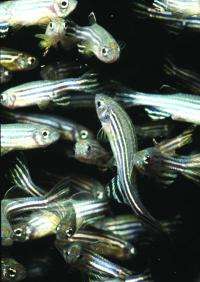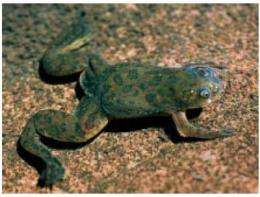Regenerative powers in the animal kingdom explored

Why can one animal re-grow tissues and recover function after injury, while another animal (such as a human being) cannot? This is a central question of regenerative biology, a field that has captured the imagination of scientists and the public since the 18th century, and one that is finally gaining traction and momentum through modern methods of analysis.
Regeneration of the eye lens in frogs; of neural tissue in the snail; of the spinal cord in the sea lamprey; of the entire viscera in the sea cucumber—these and other capacities of animal regeneration are detailed in a "virtual symposium" in this month's issue of The Biological Bulletin.
"[The] use of animal models to understand the mechanism of regeneration is both fruitful and of potentially enormous significance to the future practice of medicine," write the issue's co-editors, Joel Smith of the MBL's Eugene Bell Center for Regenerative Biology and Tissue Engineering; and James L. Olds of the Department of Molecular Neuroscience at George Mason University.

"The challenge is to describe the mechanisms of (animal) regeneration at the molecular level, delivering detailed insights into the many components that are cross-regulated," assert Smith and colleagues in a research article that advocates a "systems" approach of constructing maps of gene activity during the animal's regenerative phase.
The power of this approach, they write, is that studying regeneration in a carefully selected model (spinal cord regeneration in the sea lamprey, for example) "can reveal gene regulatory networks that may be conserved in the human central nervous system and may therefore serve as therapeutic targets for new pharmacological and biological compounds after brain or spinal cord injury."

Other authors take different approaches to illuminating regenerative biology. Robert Lauzon of Union College and colleagues, in research conducted partly at the MBL, consider the roles of stem cells and allorecognition in sea squirt regeneration. Nozomi Yoshinari and Atsushi Kawakami of Tokyo Institute of Technology review the process of fin regeneration in zebrafish and medeka and highlight the "compartments" or subpopulations of cells that are involved. MBL scientists Mark Messerli and David Graham review the roles of extracellular electrical fields (EFs) in controlling development, wound healing, and regeneration. Three of the issue's papers apply tools and insights from neuroscience to investigate neural regeneration in the snail (Ryota Matsuo and Esturo Ito of Tokushima Bunri University; M.J. Zoran of Texas A&M and colleagues; and in the sea squirt (H.N. Sköld of University of Gothenburg and colleagues). Finally, the issue reprints a landmark article on the concept of polarity in regenerative processes by Thomas Hunt Morgan, an early leader in the field, which was first published in The Biological Bulletin in 1909.
In co-editing the issue, Smith and Olds write, "we were struck anew how many unanswered questions of basic science are central to regeneration," such as the "age-old question [of] whether, and to what degree, regenerative processes recapitulate the developmental program." But the field of regeneration today is "broad and vibrant," as this issue of The Biological Bulletin shows, with many efforts furnishing answers and clues.
Provided by Marine Biological Laboratory


















